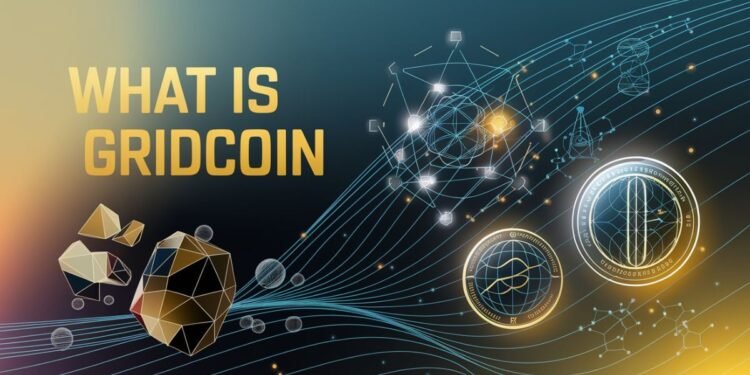Gridcoin plays a crucial role in decentralized computing by rewarding users who contribute to scientific research through their idle computing power. As a decentralized cryptocurrency, it operates on the BOINC platform, providing an energy-efficient alternative to traditional mining. In 2024, Gridcoin’s decentralized computing rewards continue to attract researchers and traders alike. By encouraging participation in projects like climate modeling and drug discovery, Gridcoin is at the forefront of crypto innovation, blending blockchain technology with significant scientific and environmental advancements.
Understanding What is Gridcoin?
Gridcoin is a decentralized cryptocurrency designed to reward users for contributing computational power to scientific research. Unlike other cryptocurrencies that use energy-intensive mining, Gridcoin operates through a more energy-efficient Proof-of-Stake (PoS) system. It is integrated with the BOINC platform (Berkeley Open Infrastructure for Network Computing), allowing users to participate in various distributed computing projects. These projects span across fields like climate modeling, medical research, and astronomy, benefiting from the collective computing power of volunteers around the world.
How Gridcoin Works with BOINC
Gridcoin’s collaboration with BOINC is a defining feature. BOINC, developed at the University of California, Berkeley, is a distributed computing platform that enables users to volunteer their idle computing power to support scientific projects. Gridcoin incentivizes this participation by rewarding users with GRC tokens for their contributions to selected BOINC projects. Users contribute to these projects by running BOINC software on their devices, which processes data for scientific research like simulating climate patterns or analyzing medical data. This decentralized model leverages computing resources efficiently while maintaining blockchain security through its PoS mechanism.
Gridcoin’s Contribution to Scientific Research and Role in Decentralized
Gridcoin’s impact on scientific research is vast and varied. It has contributed to fields such as climate change research, drug discovery, and space exploration. For instance, projects like climateprediction.net use Gridcoin’s distributed computing resources to run complex climate models, aiding in our understanding of global climate patterns. In the medical field, Rosetta@home uses these resources to study protein folding, which can help in the development of treatments for diseases like Alzheimer’s and cancer. Additionally, in astronomy, Gridcoin supports projects like Milkyway@home, which maps the structure of our galaxy.
Key Scientific Projects Supported by Gridcoin:
- Climate modeling: climateprediction.net
- Medical research: Rosetta@home
- Astronomy research: Milkyway@home
Gridcoin’s Market Trends and Price Predictions for 2024
As Gridcoin continues to support scientific research, its market presence remains stable and growing. In 2024, traders and investors closely monitor its price fluctuations, making it a key area of interest in the crypto space. This section delves into the current market performance of Gridcoin and offers price predictions based on technical indicators for the coming year.
Current Market Value of Gridcoin in 2024
Gridcoin (GRC) is currently priced at around $0.0031 with a market capitalization of approximately $1.47 million. While it has experienced some price drops in the past, it has seen an overall increase of around 16.65% in the last week. The coin has a circulating supply of 460 million GRC, making its performance notable among smaller cryptocurrencies.
Price predictions for 2024 suggest a range of growth depending on market conditions. Analysts estimate that the price could fluctuate between $0.0088 and $0.0158 by the end of the year. This potential for growth, along with Gridcoin’s continued focus on decentralized science, makes it a coin to watch, especially for those interested in the intersection of cryptocurrency and scientific progress.
Gridcoin Staking and Reward System
Gridcoin operates on a Proof-of-Stake (PoS) mechanism, which allows users to earn rewards by staking their GRC tokens. Staking not only secures the network but also provides passive income for participants. In 2024, the current staking rewards are expected to remain competitive with other PoS cryptocurrencies, such as Ethereum and Solana. This makes Gridcoin an attractive option for environmentally-conscious investors, as it avoids the energy-intensive mining processes used by many other cryptocurrencies.
A comparison of staking rewards between Gridcoin and other PoS coins can help investors decide where to allocate their resources, especially as Gridcoin’s staking rewards remain consistent and beneficial for long-term holders.
Check Out:
Gridcoin is more than just a cryptocurrency; it represents a bridge between decentralized computing and scientific advancement. Its growth in market presence and sustainability through the Proof-of-Stake system makes it a valuable asset for both investors and researchers. Looking ahead to 2024, Gridcoin’s potential to support groundbreaking projects could enhance its role in the blockchain space.






